







| Multicoloured Asian Ladybird (Harmonia axyridis (Pallas, 1773)) |








|
|
Scientific name: Harmonia axyridis (Pallas, 1773) Common name: Multicoloured Asian Ladybird Other names: Multicoloured Asian Lady Beetle, Halloween Lady Beetle, Japanese Lady Beetle, Southern Lady Beetle, Harlequin ladybird French name: Coccinelle asiatique, Coccinelle arlequin Order: Coleoptera Family: Coccinellidae Wingspan : Length: 4,9 to 8,2 mm; Width: 4,0 to 6,6 mm. Males are slightly larger than females. Biotope: Low vegetation, can try to winter in large groups inside buildings. Geographic area: Originated from south-east Asia, from the Altaï Mountains to the Pacific Ocean. Introduced to Europe and to America for the biological control of arthropod pests. Observation period : March to October. But also in winter as the imago overwinters. |
The Multicoloured Asian Ladybird shows many different colour forms with a very different number of dots from one beetle to another. The identification from European Beetles is based on the following points: The Multicoloured Asian Ladybird is a larger size. The marks on the thorax can be one of the three following form: Five small black dots on a white background like the footprint of a cat, the M letter written in black on white (in fact this is a merge of the five previous dots when they are larger), a central black band between two white edges (the dots are much larger so that the M-shape becomes a complete band). The legs are orange-yellow or brown. This Beetle was introduced into Europe to control aphids which are eaten by the Lady Beetle larva. This species is now out of control and the population is quickly increasing with a negative impact on native Lady Beetles. Ladybird's larvae show tubercles on the upper side and on the sides of the body (dorsal scoli and sub dorsal scoli). Only larvae of the Harmonia genus show ramified scoli with two or three spines. The Multicoloured Asian Ladybird's larvae are black. The last instar shows orange coloured sub dorsal scoli 1 to 5 and dorsal scoli 1, 4 and 5. |
| [To know more about the Multicoloured Asian Ladybird] [Next picture] [Top] |
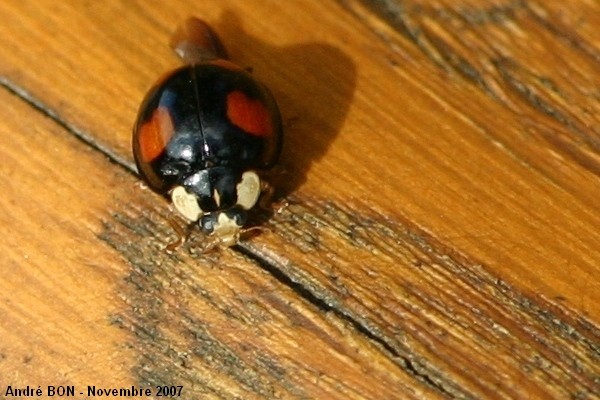
|
This picture was shot on a seat near a woodland edge. The yellow legs allow to distinguish from Adalia bipunctata which has black legs. There is still a possible confusion with Adalia 10-punctata. I have based this identification on the body size which seemed rather large to me. |
| [To know more about the Multicoloured Asian Ladybird] [Next picture] [Previous picture] [Top] |
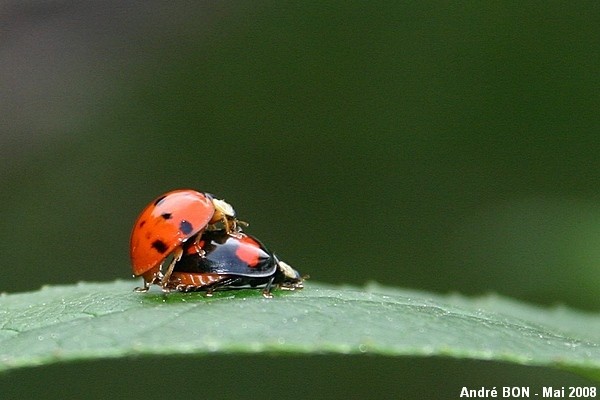
|
Mating on the Buddleja, in my garden. |
| [To know more about the Multicoloured Asian Ladybird] [Next picture] [Previous picture] [Top] |
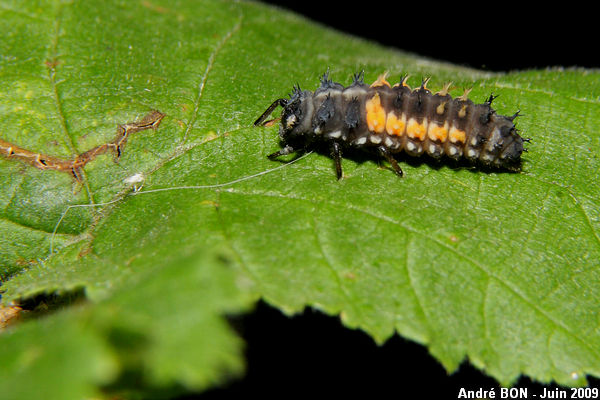
|
Larva observed on the leaves of the hazelnut tree which grows in one corner of my garden. |
| [To know more about the Multicoloured Asian Ladybird] [Next picture] [Previous picture] [Top] |
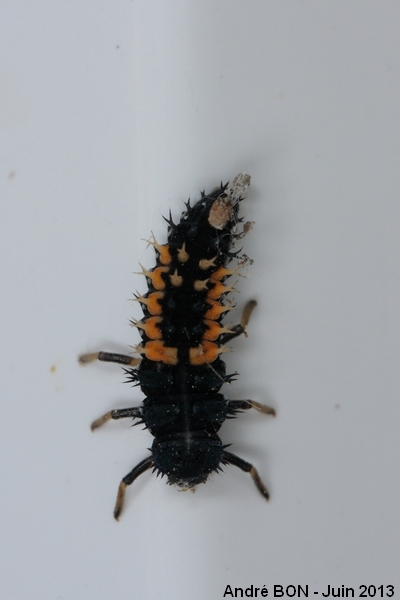
|
Here is a picture of a larva providing a good view of the orange coloured sub dorsal scoli 1 to 5 and dorsal scoli 1, 4 and 5. |
| [To know more about the Multicoloured Asian Ladybird] [Next picture] [Previous picture] [Top] |
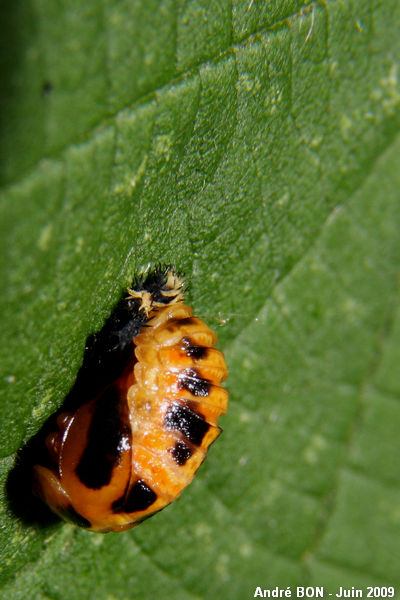
|
Pupa observed on a hazelnut tree leaf. |
| [To know more about the Multicoloured Asian Ladybird] [Next picture] [Previous picture] [Top] |

|
Here are a few eggs laid on a leaf of Clematis. I have shot this picture with a 24 mm lens mounted in reverse to get a high magnification. The size of these eggs is about one millimetre. |
| [To know more about the Multicoloured Asian Ladybird] [Next picture] [Previous picture] [Top] |
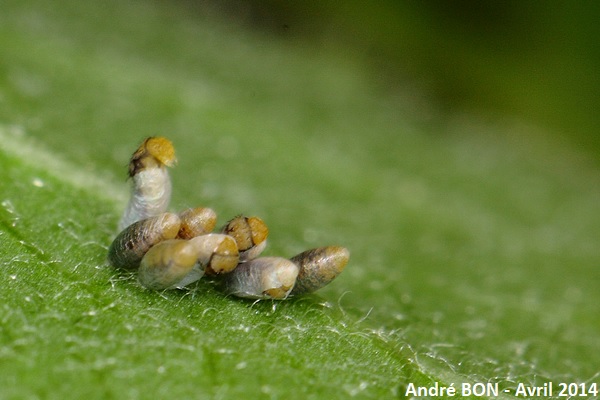
|
The larvae hatch out. |
| [To know more about the Multicoloured Asian Ladybird] [Previous picture] [Top] |
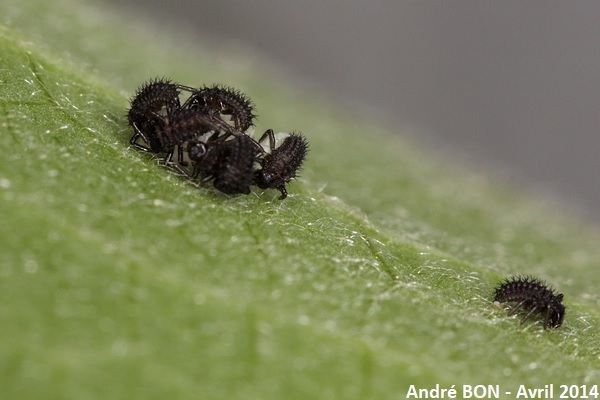
|
The larvae have changed after two days. They are now dispersing. |